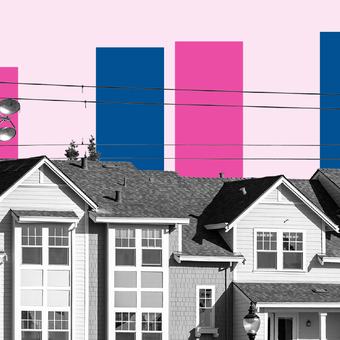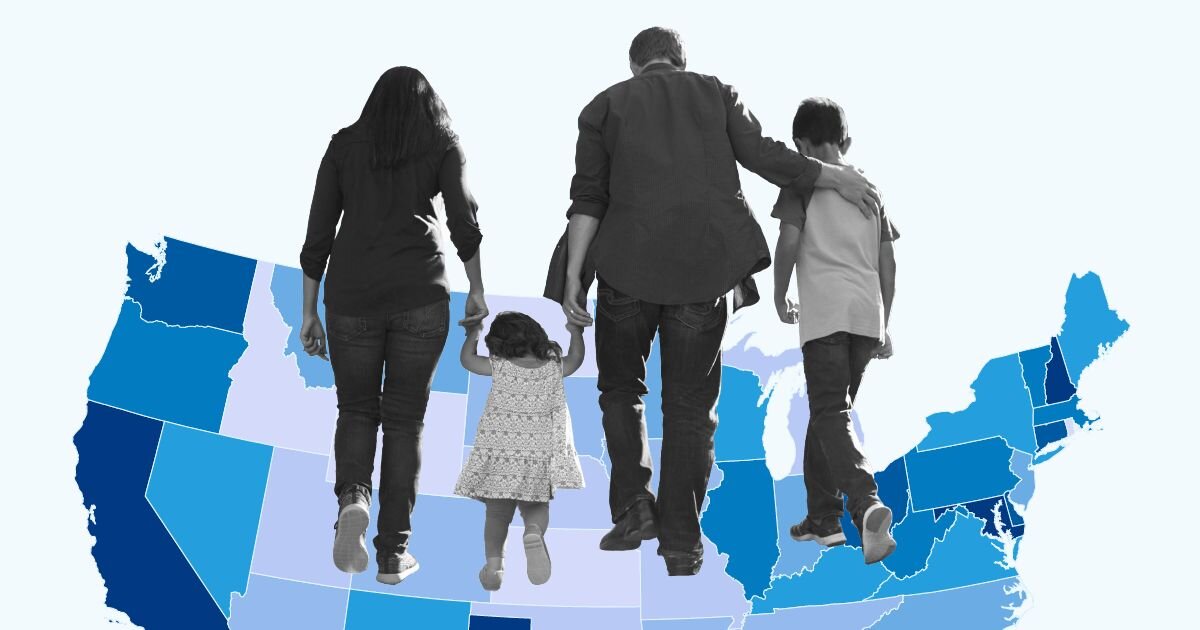In 2022, there were an estimated 4.8 million multigenerational households in the US — homes with three or more generations living under one roof — equal to 3.7% of all households in the country. Those households contain 26 million people, or 8.1% of the US population.
Are multigenerational households becoming more common?
Multigenerational households have consistently hovered at around 3.8% of all households in the US. 2022’s rate of 3.7% was the lowest since 2010.
Various trends have changed the landscape of American housing over the past 50 years:
- Family sizes have shrunk from an average of 3.7 people in 1966 to 3.1 people in 2022.
- The square footage of single-family homes grew about 21% from 1990 to 2022, even as the number of people living in each household declined.
- The share of people living alone has also grown: In 1960, 13% of all households (6.9 million) were people living by themselves. By 2022, that number was 28.9% (37.9 million).
Subscribe to get unbiased, data-driven insights sent to your inbox weekly.
What are the demographics of multigenerational households?
Non-white people in the US are more likely to live with three or more generations under one roof: Nearly 20% of all Native Hawaiian/Other Pacific Islander households are multigenerational. Among white households, it’s 5%.
Children were the most likely age group to live in this housing, with 11.4% of people under 18 living in multigenerational households, compared with 8.8% of people ages 18 to 24, 6.5% of people over 65, and 7.1% of adults ages 25 to 64.
A 2019 Census Bureau report on children’s living arrangements suggests that immigration influences multigenerational household patterns, as parents and grandparents move from abroad to live with family members who have recently immigrated.
What is the racial and ethnic background of multigenerational households?
In 2022, 19.9% of Native Hawaiian and Pacific Islanders lived in a multigenerational household, the most likely racial demographic to do so. That was followed by 14.9% of American Indian/Alaska Native households, 13.5% of Asian households, and 13.2% of Hispanic households.
The nationwide average for all racial and ethnic groups was 6.8%, with the white population below that, at 5.0%.
How many foreign-born people live in multigenerational housing?
In the US, multigenerational housing is more common among people who were born in another country. In 2022, 11.8% of foreign-born people lived with three or more generations under one roof, compared with 7.4% of people born in the US.
Does education correlate with multigenerational housing?
As educational achievement increases, the likelihood of living in a multigenerational household drops. In 2022, 12.9% of adults older than 25 without high school degrees lived in multigenerational housing, as did 8.5% of people who had completed high school, 6.8% of people with some college, 5.0% of people with associate’s or bachelor’s degrees, and 3.7% of people with advanced degrees.
Where do people live in multigenerational homes?
The most recent state- and county-level data comes from the 2020 decennial census. That year, 4.7% of all US households were multigenerational.
Top states for multigenerational families
Hawaii had the largest share of multigenerational households: 9.1%. In California, 7.3% of households were multigenerational, as were 6.0% in Texas.
Top counties for multigenerational families
South Dakota’s Oglala Lakota County had the highest percentage of multigenerational households, with 24% of all households containing three or more generations. Five of the top 10 counties were in South Dakota, and three were in Alaska.
Learn more about the structure of American households, and get the data directly in your inbox by signing up for our email newsletter.
Related population articles
Read data analyses written by the USAFacts team.
Page sources and methodology
All of the data on the page was sourced directly from government agencies. The analysis and final review was performed by USAFacts.
Census Bureau
American Community Survey



